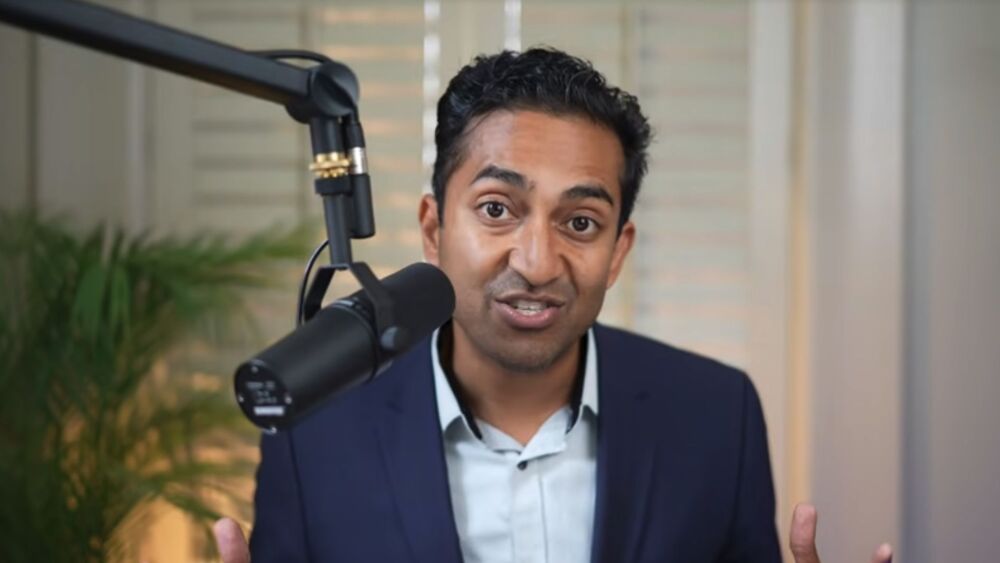As analysts parsed news of Vinay Prasad’s ouster, worries over drug approval delays, cell and gene therapy impacts and more were top of mind.
There seems to be no love lost between the biopharma analyst community and Vinay Prasad as the director of the FDA’s Center for Biologics Evaluation and Research exits the agency after just three months.
In notes that arrived after the late Tuesday announcement of Prasad’s sudden departure, analysts generally agreed that the news is a plus for the rare disease space but not for vaccine makers.
“Overall, we think that Prasad’s departure is a big positive for biotech in general and CGTs in particular, given that Prasad’s appointment was perceived as a ‘worst-case scenario’ by investors,” wrote BMO Capital Markets analyst Kostas Biliouris on Tuesday evening.
“With Dr. Prasad’s time as director of CBER now over, we wonder if his departure could signal a shift towards the more permissive, patient advocacy centered ‘right to try’ wing of the MAHA movement vis-à-vis rare disease indications,” wrote Leerink Partners on Wednesday morning.
On vaccines, the firm said, “the MAHA/RFK policy agenda remains firmly ascendant, making this news neutral to net-negative for that space.”
One sure thing is that the ouster does not help stabilize the shaky ground that the biotech industry is standing on, according to Stifel. Prasad’s departure “might eventually be good but how can we know,” the firm’s analysts wrote.
Reflecting on the recent upheaval, BMO Capital Markets Analyst Evan David Seigerman hoped for a more stable period to come: “In a year of the ‘unprecedented’ we are hesitant to speak in guarantees, but it is challenging to envision a selection that would pressure biotech more than what we have recently seen.”
Not A Pushover
Prasad was named CBER chief in May, replacing much-respected gene therapy advocate Peter Marks, who resigned from the role under pressure from Health and Human Services Secretary Robert F. Kennedy Jr.
In his three-month tenure, Prasad ascended to become what Stifel called FDA Commissioner Marty Makary’s “right-hand man in shaping FDA policy.” He committed to advancing rare disease treatments via regulatory flexibility. But multiple analysts noted his data-driven approach to regulating.
Prasad presided over several controversial decisions during his stint, including rejections of treatments submitted by Capricor, Replimune and Ultragenyx. Stifel said these rejections showed that Prasad was “not going to be a pushover.”
Jefferies analysts, who view Prasad’s departure as neutral for the biotech industry, think his rejections weren’t out of the blue and not necessarily a signal that Prasad was overruling career scientists and drug reviewers.
“We’d argue that regulatory decisions have not necessarily been irrational, nor has the FDA been more dysfunctional. If anything, we felt Dr. Prasad thought more rationally (and conservatively) around FDA approvals, requiring sponsors to produce more supporting clinical evidence (and to take fewer “shortcuts”),” the analysts wrote.
Mostly, Prasad’s decisions seemed to have merit and were even more predictable than those of his predecessor Marks, Jefferies said.
But then there was Sarepta, which is an exception. Prasad was involved in a very public spat with Sarepta over the gene therapy Elevidys. After several deaths were tied to the Duchenne muscular dystrophy (DMD) treatment, the FDA tried to compel Sarepta to take the product off the market. While Sarepta ultimately acquiesced, the FDA suddenly reversed its decision on Monday.
The back and forth between Sarepta and the FDA “underscored tension” within the agency, according to Leerink, and suggests there were disagreements among senior leaders as to how to handle the situation.
BMO’s Biliouris said the Sarepta saga “negatively impacted” the FDA’s credibility, particularly as Sarepta had logged a death from one of its gene therapies but the agency simply didn’t notice for two weeks. This “[points] to lack of FDA monitoring of key safety events,” he concluded. There have also been multiple leaks to the press throughout the incident.
Sarepta’s shares rose 15% Wednesday morning to $18.27 as the markets opened. Analysts had predicted that Sarepta could see a rally. The stock had cratered as the battle over Elevidys played out in clipped press releases and whiplashing policy decisions. Amid the fight, the FDA pulled Sarepta’s recently granted platform technology designation, which granted clearance for the biotech’s viral vector, rAAVrh74, used in its gene therapies.
Replimune rose even more, by 64% to $6.15 apiece, just as analysts had predicted as well. A new CBER director could revisit the rejection of RP1 for advanced melanoma, BMO said.
Gene therapy and cell therapy companies could also see a bump in shares today, Jefferies suggested, though they also said that rare disease companies probably wouldn’t see much of a boost.
One major beneficiary will be the patient advocacy groups who lobby for drug approvals in difficult diseases like DMD and Alzheimer’s, multiple analysts noted.
“If Prasad’s departure is meaningfully tied to Sarepta dynamics, then we’d argue patient advocacy groups can be a dominant force going forward,” Jefferies said. In the wake of the halt on Elevidys, patient advocacy groups had pushed for continued access to the treatment once the safety issues are resolved.
Who’s Next?
Talk quickly turned to who will replace Prasad. Leerink predicted the new chief will “lean further toward ‘right to try’” than Prasad did, meaning more rare disease drugs could be given clearance for patient use earlier.
While Jefferies expressed concern about a potential delay to drug approvals while the search is conducted, Stifel worried more broadly about who will have a voice in the replacement. The firm made the case for a CBER director that has industry experience, similar to recently appointed Center for Drug Evaluation and Research Director George Tidmarsh.
“If Prasad was ousted for being too strict/conservative that argues for a more flexible replacement, but within the current HHS framework it feels like this could go a number of directions,” Stifel said.
BMO Analyst Seigerman, who titled his Tuesday evening note “Exit Stage Right,” said that a replacement would “likely be more permissive of innovation than what we have seen to date,” heralding Prasad’s departure as a positive. “Turnover and uncertainty are rarely a positive—except when turnover can clear a path for a more permissive environment.”
Whoever the replacement is, BMO’s Biliouris, too, said the person is most likely to be an improvement compared to Prasad. He suggested a “more seasoned/traditionalist” director “could help the FDA to rebuild its credibility.”






